Author: Jordan Folks
Developed by homebrewer, Paul Tecker, who eventually released his H2OPS product in 2014, hop water has been getting quite a bit of attention of late due to the increased interest in non-alcoholic and low-calorie beverages. Similar to beer, there are a number of methods for producing hop water, and while all are arguably simple, certain approaches have been said to have a qualitative impact.
One of the more popular commercial hop waters is Hoppy Refresher from Lagunitas, which pairs pungent hop characteristics with sparkling water, and they offer various flavors as well. Recently, the folks at MoreBeer revealed that Lagunitas adds yeast to their hopped water for the purposes of biotransformation in order to amplify the fruity characteristics of the hops.
While I certainly appreciate the idea of simply adding hops to a keg of water, carbonating it, and drinking it, I also get some masochistic pleasure from engaging in over-complicated processes, as long as it has a positive impact. As someone who genuinely loves Lagunitas Hoppy Refresher, I was highly interested in trying this method, so I decided to design an xBmt to see how it compares to a batch where yeast isn’t added.
| PURPOSE |
To evaluate the differences between a batch of hop water where yeast was added and one where yeast was not added.
| METHODS |
My goal for this batch of hop water was to follow Lagunitas’ process as closely as possible, and I opted for a blend of Motueka and Citra hops to accentuate lemon-lime notes.
Lupula Croix
5 gallons/19 liters water (1:2 sulfate to chloride)
57 grams/2 oz Motueka at flameout
57 grams/2 oz Citra dip hop
100 mL Imperial Yeast A07 Flagship
After collecting 10 gallons/38 liters of filtered tap water in my 10 gallon Clawhammer Supply kettle, I added calcium chloride to achieve a 1:2 sulfate to chloride ratio and acidified the water to 3.3 pH before turning the controller on.
While the water was heating up, I weighed out the hops.
When the water was at 170°F/77°C, I prepared the dip hops by adding 500 mL of it along with 57 grams/2 oz of Citra hops to separate sanitized fermentation kegs, which remained sealed for the remainder of the “brew” day. I then boiled the water for 10 minutes.
When the brief boil was complete, I cut the heat and added 114 g/4 oz of Motueka to the water. Note– this would amount to 57 g/2 oz for a 5 gallon/19 liter batch.
After a 10 minute hop stand, I transferred identical volumes of water through my plate chiller to the two kegs that contained the dip hops.
At this point, I added approximately 100 mL/3.4 fl. oz. of previously harvested Imperial Yeast A07 Flagship to one of the kegs.
Both kegs were then purged with CO2 and left at 68°F/20°C for 5 days, at which point the waters were pressure transferred to serving kegs, placed in my cold keezer, and burst carbonated at 40 psi for 3 days before I reduce the gas to serving pressure. After a few more days of conditioning, the waters were ready for evaluation.
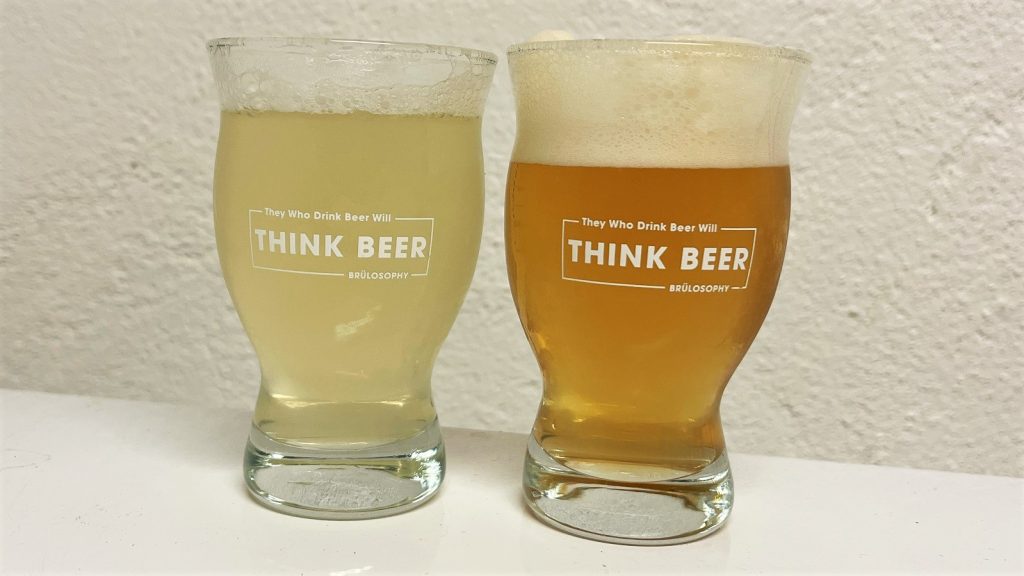
| RESULTS |
A total of 20 people of varying levels of experience participated in this xBmt. Each participant was served 1 sample of the hop water where yeast was added and 2 samples of the hop water that did not include yeast in different colored opaque cups then asked to identify the unique sample. While 11 tasters (p<0.05) would have had to accurately identify the unique sample in order to reach statistical significance, 18 did (p=0.0000002), indicating participants in this xBmt were able to reliably distinguish hop water dosed with yeast prior to packaging from one that did not receive a yeast addition.
The 18 participants who made the accurate selection on the triangle test were instructed to complete a brief preference survey comparing only the hop waters that were different. A total of 17 tasters reported preferring the hop water dosed with yeast and 1 had no preference despite noticing a difference; not a single taster preferred the batch made without yeast.
My Impressions: Out of the 5 semi-blind triangle tests I attempted, I was able to easily identify the unique sample every time based on the aroma alone, though they tasted vastly different as well. I perceived the batch dosed with yeast as bright, crisp, citrusy, and refreshing, while the non-dosed batch was notably sharp, stale, and had many of the same characteristics I get in oxidized IPA. It was horrendous.
| DISCUSSION |
As the interest in low/no alcohol beverages continues to grow, so too will the focus on hop water, which aims to satiate the desires of beer lovers looking to reduce their alcohol intake. While many have reported positive results making hop water by simply adding hops to water and carbonating it, Lagunitas adds yeast to theirs with the purpose of encouraging biotransformation. Interestingly, tasters in this xBmt were able to reliably distinguish hop water dosed with yeast prior to packaging from one that did not receive a yeast addition.
Yeast being a living organism, it makes sense that even in the absence of sugar, it could have an impact on certain perceptible characteristics, especially in the presence of hops. While biotransformation may help to explain the results of this xBmt, the differences in appearance, aroma, and flavor are quite striking. Many people have made hop water without yeast that end up looking more or less like water, so perhaps there’s something about the specific processes I used that encouraged the batch made without yeast to develop what seems to be the signs of oxidation.
To say I was shocked by the outcome of this xBmt would be a massive understatement. I fully understand that yeast scavenges oxygen from beer, but I didn’t expect it to have the same effect in hop water, especially since I’d never heard that oxidized hop water was a thing. This being my first batch of hop water, I’m compelled to continue dosing future batches with yeast not only for the purposes of biotransformation, but as a mechanism for quality control and shelf-stability.
If you have any thoughts about this xBmt, please do not hesitate to share in the comments section below!
Support Brülosophy In Style!
All designs are available in various colors and sizes on Amazon!
Follow Brülosophy on:
FACEBOOK | TWITTER | INSTAGRAM
If you enjoy this stuff and feel compelled to support Brulosophy.com, please check out the Support page for details on how you can very easily do so. Thanks!


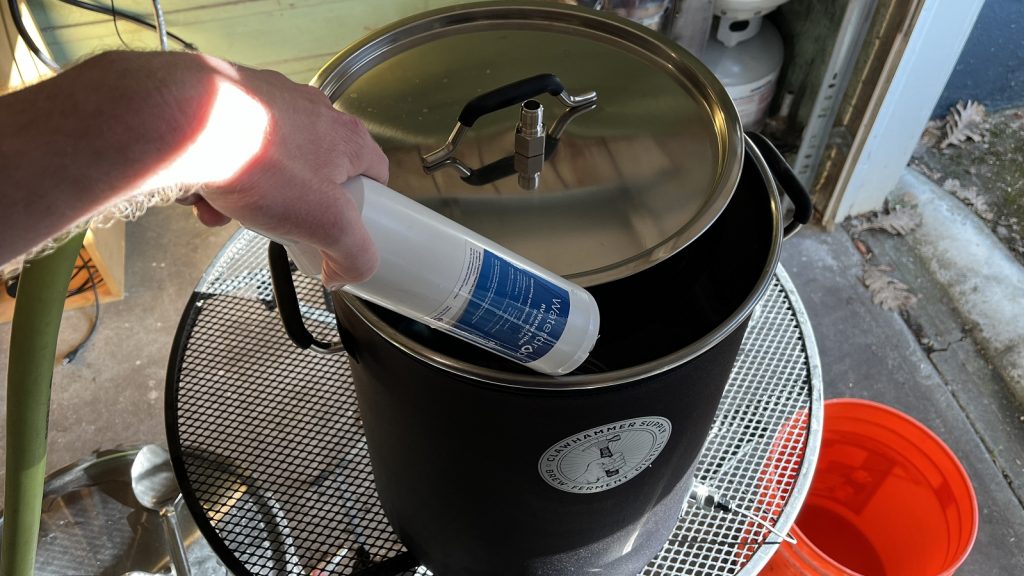
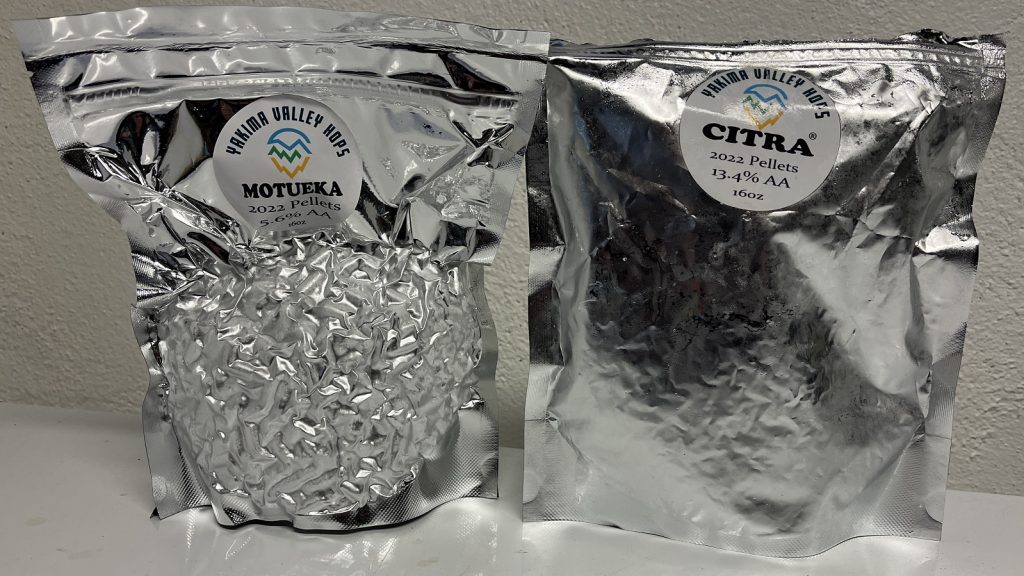
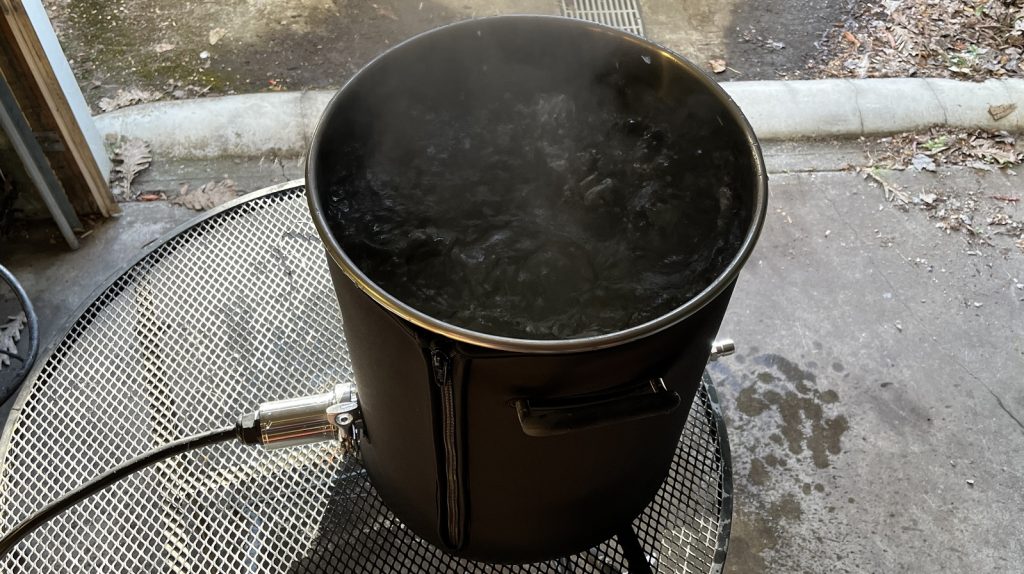
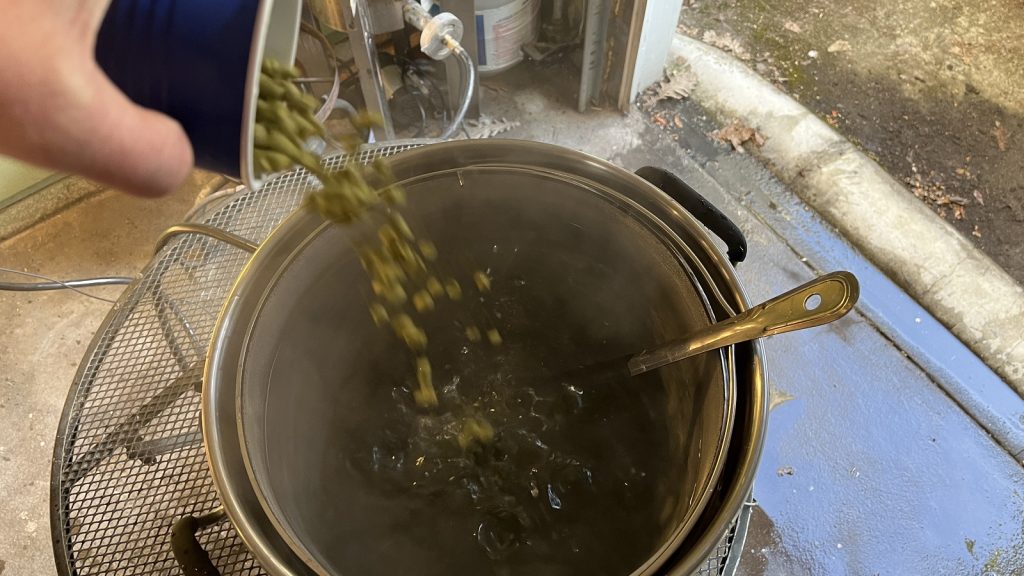
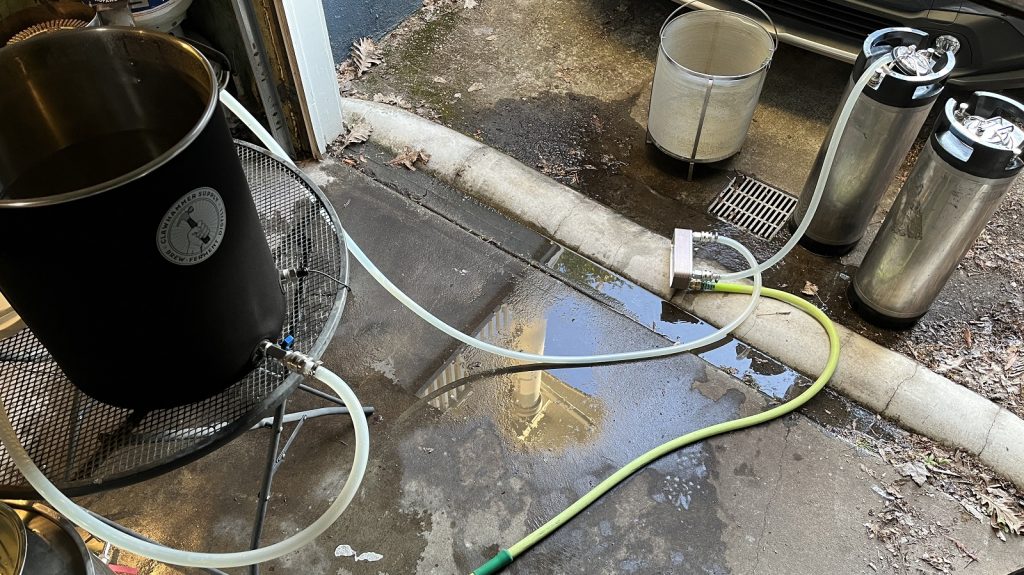
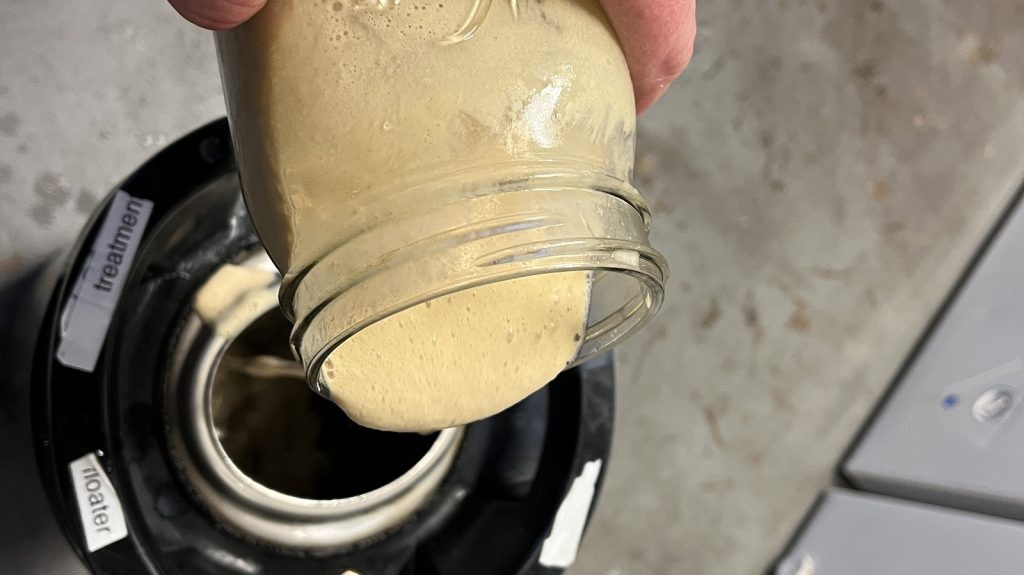











22 thoughts on “exBEERiment | Impact Yeast Has On Hop Water”
Why does the non yeasted hop water look so dark? To me it actually looks like beer. If the color is that drastic, I would bet that’s another way tasters could notice the difference between the triangle test cups. I’m surprised there’s no note of that observation in the article!
But it does – “Each participant was served 1 sample of the hop water where yeast was added and 2 samples of the hop water that did not include yeast in different colored opaque cups then asked to identify the unique sample.”
In addition to opaque cups, I asked tasters to avoid looking in their cups as it would give away the answer. It was funny how seriously people took it – one taster even blinded themself with a sleeping mask!
Dried yeast extract is used in wine to prevent oxidation as it has thiol compounds like glutathione. This is probably what is happening here.
This is cool. It seems like the yeast is acting as a natural preservative. Was the yeast active? Is this kind of like “top cropping” the hop water? I wonder how this method would compare to sodium metabisulfite.
The yeast was reasonably fresh slurry, but was not actively in the process of fermenting a medium when it was pitched (it was theoretically in a dormant state from being stored in the fridge until pitching)
To me, it looks like the yeast might be helping clarify the hop water when it flocculates. I’d be surprised that it is scavenging oxygen without any added sugar, although I suppose if the slurry is active at pitching this may happen to some degree.
Vito at MoreBeer told me that he measured the gravity of a batch of hop water before adding the yeast and it read 1.004 (he told me this since conducting this xbmt, so I did not think at the time to measure the “OG”). So it seems the hops may be adding some trace [fermentable?] sugars.
Yes, there are trace fermentable sugars in hops. I don’t have a reference handy, but I’m sure you can find one easy enough. I’d also hazard a guess that any ethanol created is not measurable by the resolution of our hydrometers.
I’ve been making hop water every couple weeks for the last 2 years and Ive never had a batch turn that copper color of your non-yeast batch. All my batches look like your non-yeast batch even without using yeast. From my own personal experience and observations, something is wrong with this picture.
I’ve never seen hop water that looked so brown and oxidized. No one leaves their hop water sitting at ambient temp for 5 days, of course it went stale and was “horrendous”. Hop water should be chilled at all times.
I understand you were probably trying to isolate the variable. I’d prefer to see the control sample go straight to the fridge. This is more in-line with real life process.
Though that’s a pretty cool outcome that the yeast was able to preserve it so well.
I appreciate this trial. While I don’t see any specific suggestions for pitching rate around the web, most reference ‘a pinch’ and so I’d think 100ml slurry would be overkill. I too think you got major oxidation in the non-yeast batch. Was that keg filled via closed transfer? Also, I’m curious about the boiling/pasteurization step as if it is even necessary. My tap water is fine to drink. Hops are naturally antiseptic. A filtered, closed transfer, cold conditioned (like a dry-hop), then highly carbonated, low pH water (3.2–3.6) should be sufficiently safe to drink, no? The object of Hop Water is to bring in flavor/aroma only, and it seems to me, letting the hops touch heat is begging for isomerization that you *do not* want. (yes, even dry hopping extracts some IBUs, which is the point of pre-acidifying so low, to avoid or reduce the effect)
MoreBeer recommended an entire pack of Imperial Yeast for a five gal batch, so I approximated that. The “fermentation” kegs were not close transferred (but CO2 purged following filling from BK), but serving kegs were closed transferred. I think boiling serves to deaerate and some extra pasteurization insurance. According to MoreBeer/Lagunitas, we’re targeting about 10 IBU via a WP addition.
I forgot about deaeration, but that didn’t seem to matter with the non-yeast batch in this case. Thanks.
Very cool experiment. I started making hop water recently and went with the yeast method off the bat. I like the results.
I recently attempted this with a thiolized yeast (adding phantasm powder). I used Sabro and Nectaron, which are both quite present, so it’s hare to discern the real impact. I will try it again with standard hops, and I’ll use Star Party in one and an unmodified Chico strain in the other just to see the difference. This could be worth an exBEERment from y’all as well 🙂
Very cool experiment. I started making hop water recently and went with the yeast method off the bat. I like the results.
I recently attempted this with a thiolized yeast (adding phantasm powder). I used Sabro and Nectaron, which are both quite present, so it’s hare to discern the real impact. I will try it again with standard hops, and I’ll use Star Party in one and an unmodified Chico strain in the other just to see the difference. This could be worth an exBEERment from y’all as well 🙂
Great article Jordan. I’m just wondering if you have the weights of your salt additions? Not just the ratio. Cheers!
That’s about 1 g CaCl in 5 gal for Portland’s neutral water – which is about 15/5 ppm starting sulfate/chloride (and that gram gets me to about 15/30). So if using RO, I’d do 1 g CaCl and .5 g gypsum to get about that.
Can you say more in regards to explaining; separate sanitized fermentation kegs?
I transferred the boiled and chilled water into standard 5 gallon corny kegs with floating dip tubes (with filter screens) that I had first sanitized with Saniclean.
Have you tried using deoxygenated water for non yeast version for comparison. Would be interested to see if oxidisation is the main difference.
Both batches used deaerated water.